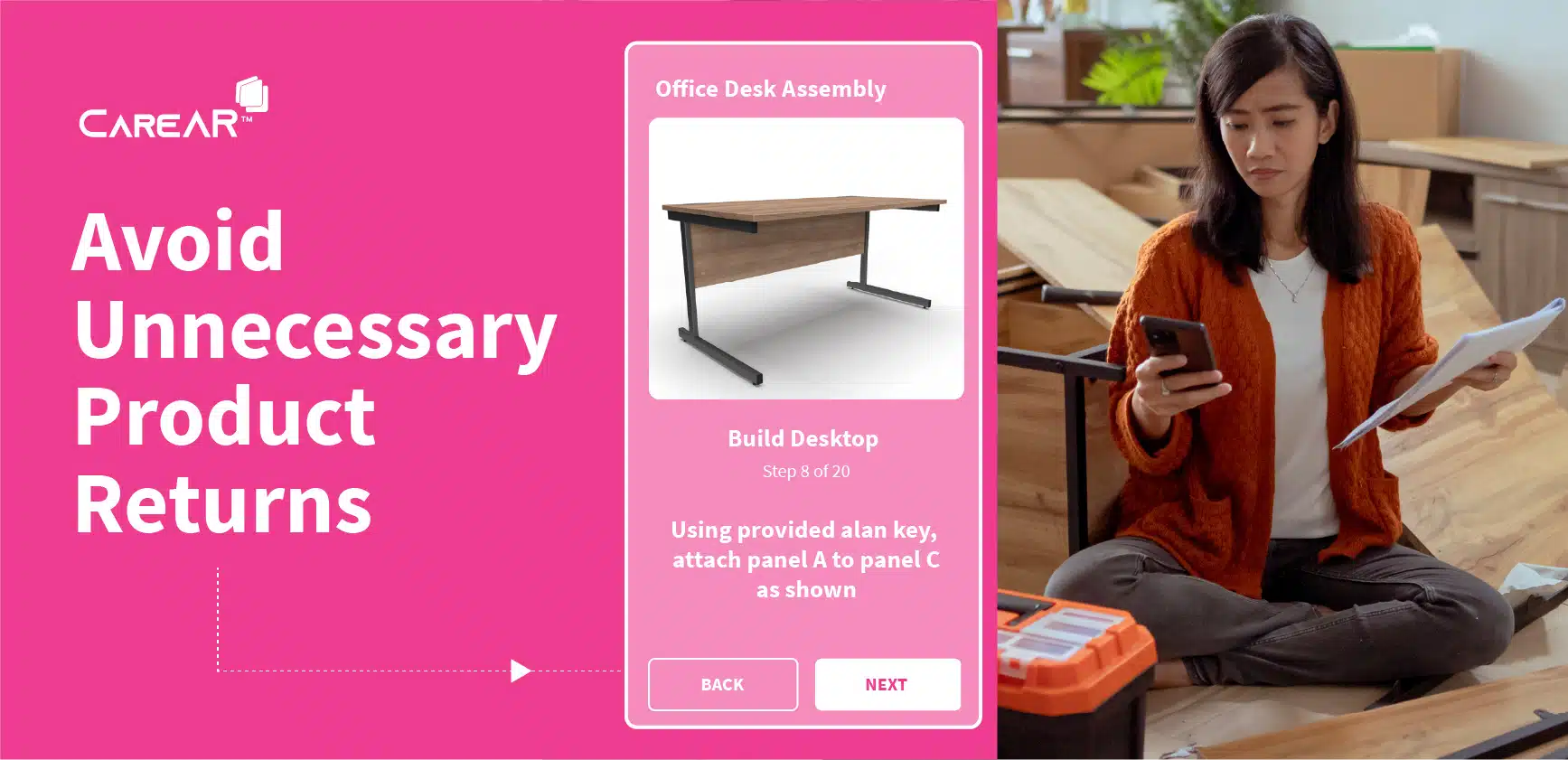Organizations spend a considerable amount of time and resources on delivering a product to customers. However, when new customers are unable to resolve issues with their newly purchased product, they often return the product even if there is not a defect.
Product returns are more than a lost sale. The cost associated with handling a return can be significant for an organization. Further, customers have a negative view of the brand after a return resulting in future loss of business. Avoiding unnecessary product returns can help companies save money, improve customer satisfaction and loyalty, and promote sustainability.
Cost savings
Processing product returns can be costly for companies, as it involves handling and shipping expenses, restocking fees, and potential refunds or exchanges. Avoiding unnecessary returns can help companies save money and allocate those resources towards other business initiatives. Processing the average return costs for companies is 59% of the original sales price for the item.
Customer satisfaction
Unnecessary product returns can frustrate customers, leading to negative reviews and potential damage to a company’s reputation. By minimizing the need for returns, companies can improve customer satisfaction and loyalty. A report found that optimizing reverse logistics processes and reducing product returns can increase profitability by up to 5% and improve customer lifetime value by up to 30%.
Environmental impact
Product returns can also have a significant environmental impact, particularly when returned items are not resold and end up in landfills. By avoiding unnecessary returns, companies can reduce their carbon footprint and promote sustainability. A recent report found that returns in the United States. resulted in 27 million metric tons of CO2 generated.
Avoid unnecessary product returns using augmented reality self-solve tools
Enable Customer to Self-Solve
CareAR® Instruct empowers users to resolve issues on their own. It delivers easy-to-follow step-by-step instructions that can guide users through procedures to help them get the most out of their newly purchased product. This can include instructions such as:
- Unboxing and product setup
- User onboarding and first use
- Product tours and feature familiarization
- Troubleshooting and ongoing maintenance
CareAR Instruct can be used to enable customers to be successful with their first use of your product, which leads to more confidence and higher customer satisfaction.
Resolve Issues Live
Some issues require expert assistance to guide the user through an issue. This is where CareAR® Assist comes in. CareAR Assist dramatically breaks down the barriers of communication allowing the remote expert to see the issue first-hand without relying on an unfamiliar user to describe the issue clearly. Using the AR annotation capability lets the expert show the customer how to resolve the problem without confusing jargon getting in the way.
Using CareAR Assist dramatically improves first-time fix rates which leads to satisfied customers and avoids unnecessary product returns.
